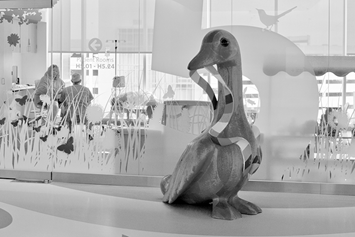Kyphosis
Kyphosis is the natural curve of the upper back (thoracic) area of the spine. In the extreme curves, the spine looks like a “hunchback.”
What Is Kyphosis?
Kyphosis (ki-fo-sis) is the natural curve of the upper back (thoracic) area of the spine. In the extreme curves, the spine looks like a “hunchback.” Some excessive curves can be passed on by parents. Some are brought on from bad posture, while others can develop from a disorder which causes abnormal shape, size, or loss of bone to the vertebrae (bone blocks) of the spine.
Types of Kyphosis
Kyphosis can affect the young and the old. It is brought on by different problems and can affect each patient differently. There are 5 primary types of kyphosis:
Postural Kyphosis
In the young patients, it typically develops from consistent poor posture, leading to muscles being “trained” to hold the spine in a hunched-over alignment
In the older patient, it may be brought on from weak bones (osteoporosis) or from fractures in the spine causing the bone blocks to collapse
Congenital Kyphosis
This type develops when the baby has parts of the spine that develop incorrectly. This is sometimes found very early in life and can be corrected with surgery. Sometimes is may not be found until teenage years when surgery can be slightly more challenging. Congenital Kyphosis can sometimes be seen in patients with cerebral palsy.
Nutritional / Metabolic Kyphosis
This type typically develops from various disorders where the body does not process the use of calcium, magnesium, phosphorus, and other important minerals in making bone hard and strong. When the body cannot use these minerals, the bone becomes weak and fragile, easily fractured or compressed (collapse). Osteoporosis is a type of disorder seen in young and old. Rickets is another type seen in children.
Post-traumatic Kyphosis
This occurs when a vertebrae (spinal bone) is injured and breaks (fractures) after a severe fall, car crash, or other types of high energy accidents to the spinal column (back bones). When the vertebrae are fractured, the bone can collapse and cause the spine to curve.
Scheuermann’s Kyphosis
This is a disease process causing the vertebrae to become trapezoid shaped instead of rectangular shaped. With the stacking of these misshaped vertebrae over a section of the spine, the smaller front of the trapezoid (wedge) allows for the spine to curve in a kyphotic (hunched-back) position.
Often seen with the misshaped vertebrae are indents (pockets) in the bone at the top bottom parts of the bones where the disc push into the bone, creating spots called Schmorl’s nodes.
The combination of the Schmorl’s nodes and kyphosis makes up the disease process known as Scheuermann’s disease or Scheuermann’s kyphosis.
What Are the Signs and Symptoms of Kyphosis?
Symptoms vary for each patient will depend greatly on how severe the curve is, age, activity level of the patient, and how quickly the curve worsens over time. For some, the curve can become so severe it may cause problems with breathing, intestinal movement, heart and nerve functions. Often, the kyphosis is painless in the early stages when the curve is not so severe.
When to Be Concerned
If the curve of the spine has become so severe that breathing and heart function become difficult, the spine should be evaluated for possible surgery needs. Sometimes, even if these problems do not develop, the curve can be complicating to standing, walking, sitting, etc. Patients with kyphosis should be followed by a physician specializing in spine problems until they are done growing. Growth can make the curve worse but can be maintained from severe problems when properly followed by a pediatric spine specialist.
How Is Kyphosis Diagnosed?
Typically all that is needed to confirm if a patient has kyphosis is an x-ray of the spine. This is also the means of monitoring the curve as the patient grows. With growth, the curve as the chance to get worse if not closely monitored with x-rays, typically every 6-12 months.
How Is Kyphosis Treated?
Most patients with any sort of kyphosis will not require surgery or treatment except in the most extreme cases. Often, patients are manage with medications such as acetaminophen (Tylenol™), ibuprofen (Advil™), or Naprosyn (Aleve™) taken as needed for occasional back discomforts. Exercises for good back health and flexibility may be used in addition to or in place of these medications. Kyphosis alone does not cause back pain, but poorly conditioned or weak muscles from lack of activity can cause muscular back pain.
In the most severe hunched-back patients, sometimes bracing can be used to help correct some of the curve in the younger patients. When bracing fails, surgery can correct the deformity.


